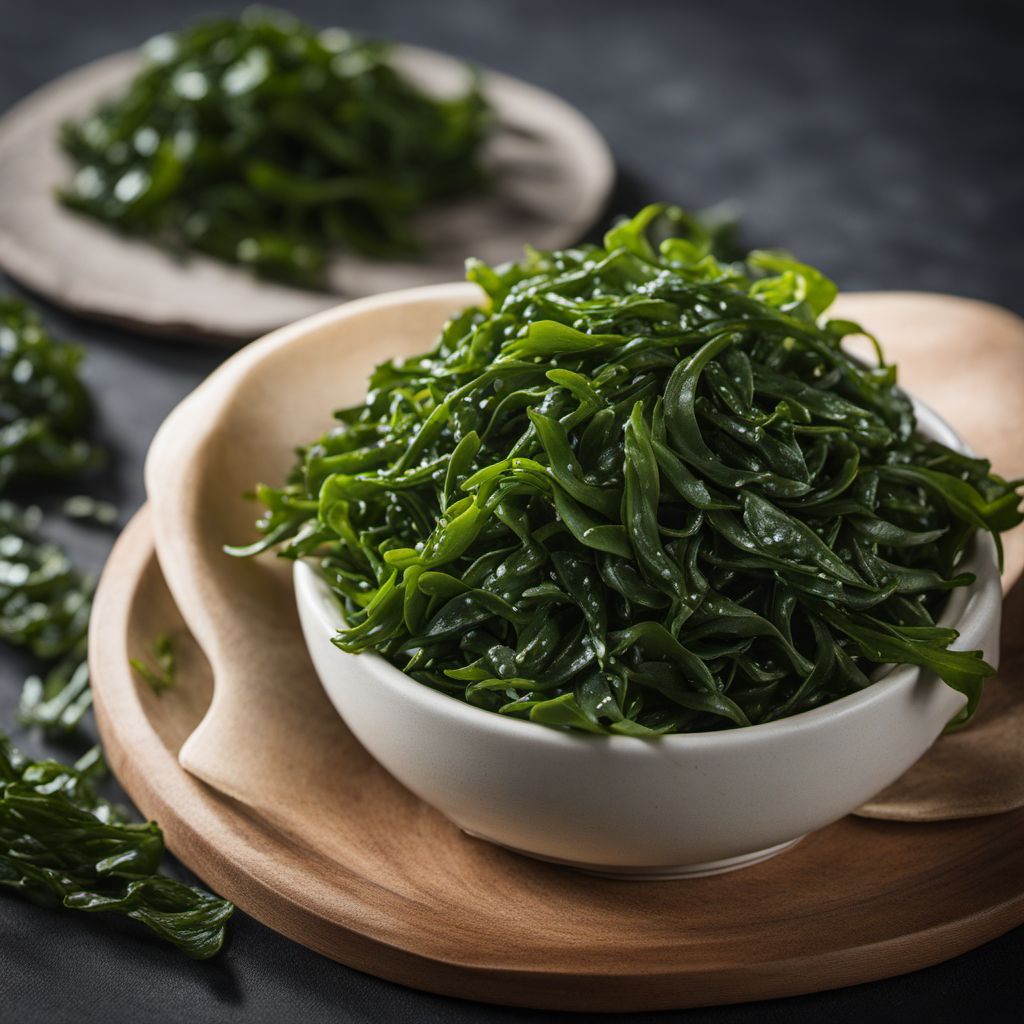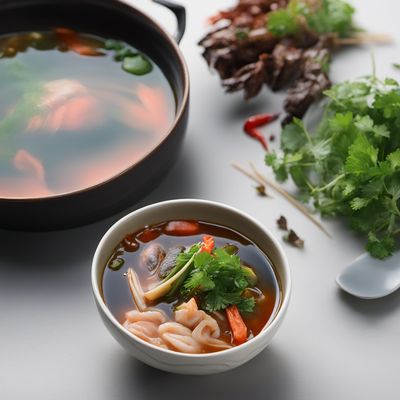
Ingredient
Wakame
The Ocean's Delight
Wakame is a brown seaweed with a delicate, slightly sweet flavor and a tender yet slightly crunchy texture. It is characterized by its vibrant green color and thin, ribbon-like fronds. When rehydrated, it expands and becomes soft, making it a popular choice in soups, salads, and sushi rolls. Its umami-rich taste enhances the overall flavor profile of dishes, while its pleasant chewiness adds a delightful textural element.
Origins and history
Wakame has been a staple in Japanese cuisine for centuries and is believed to have originated in East Asia. It has a long history of culinary use in Japan, where it is commonly harvested along the coastlines. Wakame holds cultural significance in Japanese cuisine and is often associated with traditional dishes like miso soup and seaweed salads. Today, it is also cultivated in other parts of the world, including South Korea and China.
Nutritional information
Wakame is a low-calorie ingredient that is rich in essential minerals such as calcium, iron, and magnesium. It is also a good source of vitamins A, C, and K, as well as dietary fiber. With its high nutrient content and low calorie count, wakame is a nutritious addition to a balanced diet.
Allergens
May contain traces of shellfish.
How to select
When selecting wakame, look for vibrant green color and avoid any with discoloration or signs of decay. Opt for dried wakame that is free from moisture and has a pleasant oceanic aroma. If purchasing fresh wakame, choose ones with firm, pliable fronds and avoid any that appear slimy or have a strong odor.
Storage recommendations
To maintain its freshness, store dried wakame in an airtight container in a cool, dry place away from direct sunlight. Once rehydrated, store it in the refrigerator in a sealed container filled with water, changing the water daily to keep it fresh for up to a week.
How to produce
Wakame can be cultivated in home aquariums or outdoor ponds with access to seawater. However, it requires specific conditions such as appropriate water temperature, salinity, and sunlight exposure. It is recommended to consult with experts or refer to specialized resources for detailed guidance on cultivating wakame.
Preparation tips
Before using wakame, rinse it thoroughly to remove any excess salt or sand. To rehydrate dried wakame, soak it in cold water for about 5-10 minutes until it becomes soft and pliable. It can be added to miso soup, seaweed salads, stir-fries, or used as a topping for sushi rolls. Wakame can also be blanched and marinated for a refreshing side dish. Its mild flavor pairs well with soy sauce, sesame oil, rice vinegar, and ginger.
Culinary uses
Wakame is commonly used in Japanese cuisine, particularly in dishes like miso soup, seaweed salads, and sushi rolls. It is also used in Korean cuisine, where it is added to soups, stews, and side dishes. Additionally, wakame is gaining popularity in Western cuisines as a nutritious and flavorful ingredient in salads, wraps, and as a garnish for various dishes.
Availability
Japan, South Korea, China
More ingredients from this category
Recipes using Wakame » Browse all

Tsukudani - Sweet and Savory Seaweed Condiment
Umami Delight: Tsukudani - A Flavorful Seaweed Infusion

Thai-inspired Sushi Rolls
Thai Spice Sushi Delight

Bosnian-style Sushi
Sarajevo Rolls: A Fusion of Japanese and Bosnian Flavors

Latvian-style Sushi
Baltic Delight: Latvian-inspired Sushi Rolls

Goma Wakame Salad
Sesame Seaweed Delight

Latin American Sushi Rolls
Samba Sushi: A Fusion of Japanese and Latin American Flavors

Wakame Udon with Sesame Soy Sauce
Seaside Delight Udon: A Flavorful Journey to the Japanese Coast

Sri Lankan Seaweed Stuffed Rice Rolls
Savory Sri Lankan Seaweed Delight

Caribbean-inspired Sushi Rolls
Tropical Paradise Sushi Rolls

Peruvian-style Sushi Rolls
Maki de Sushi Peruano: A Fusion of Flavors

Sichuan-style Spicy Sushi Rolls
Fiery Fusion: Sichuan-inspired Spicy Sushi Rolls

Okinawan Seafood Soup
Oceanic Delight: Okinawan Seafood Soup


